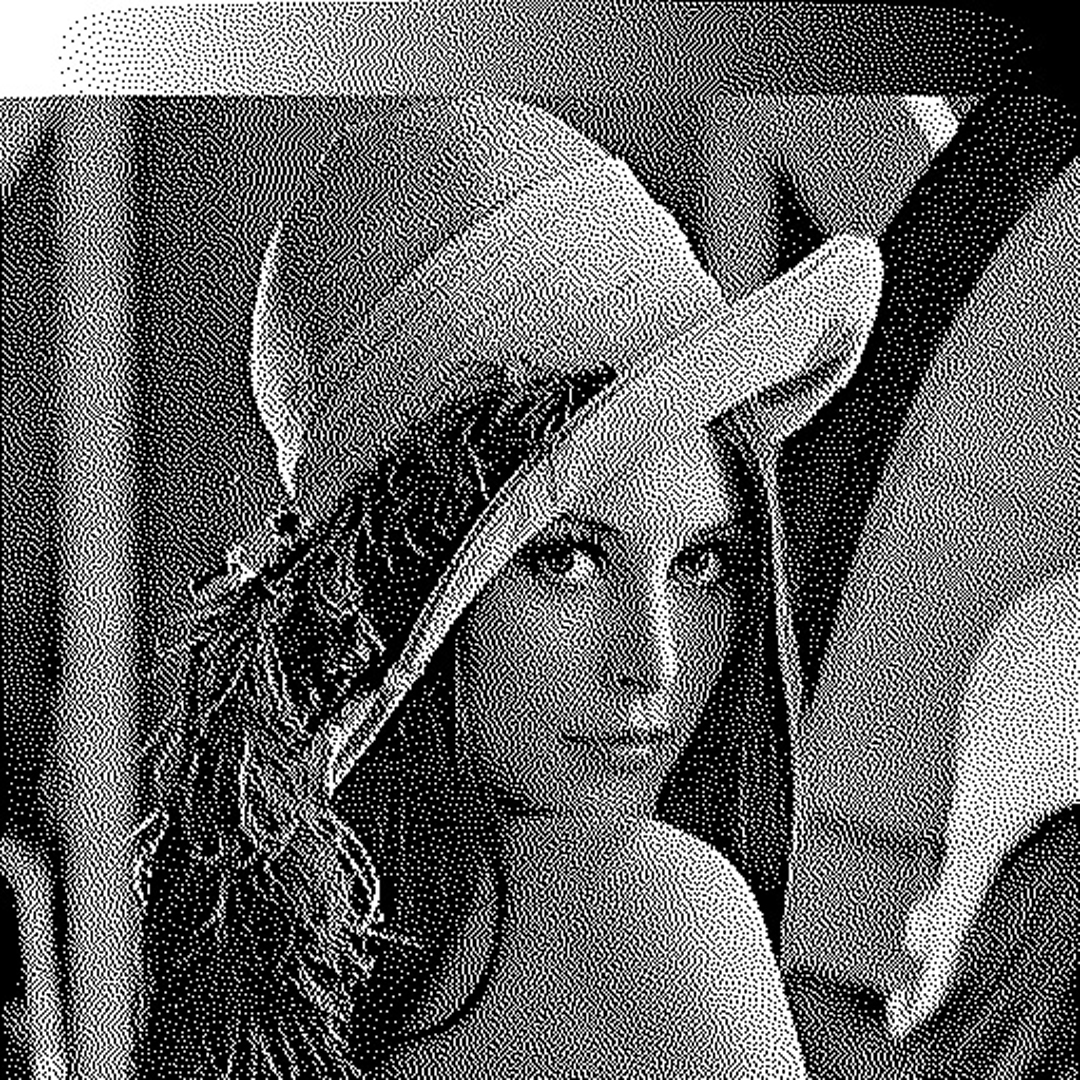“Rotated dispersed dither: a new technique for digital halftoning” by Ostromoukhov, Hersch and Amidror
Conference:
Type(s):
Title:
- Rotated dispersed dither: a new technique for digital halftoning
Presenter(s)/Author(s):
Abstract:
Rotated dispersed-dot dither is proposed as a new dither technique for digital halftoning. It is based on the discrete one-to-one rotation of a Bayer dispersed-dot dither array. Discrete rotation has the effect of rotating and splitting a significant part of the frequency impulses present in Bayer’s halftone arrays into many low-amplitude distributed impulses. The halftone patterns produced by the rotated dither method therefore incorporate fewer disturbing artifacts than the horizontal and vertical components present in most of Bayer’s halftone patterns. In grayscale wedges produced by rotated dither, texture changes at consecutive gray levels are much smoother than in error diffusion or in Bayer’s dispersed-dot dither methods, thereby avoiding contouring effects.Due to its semi-clustering behavior at mid-tones, rotated dispersed-dot dither exhibits an improved tone reproduction behavior on printers having a significant dot gain, while maintaining the high detail rendition capabilities of dispersed-dot halftoning algorithms. Besides their use in black and white printing, rotated dither halftoning techniques have also been successfully applied to in-phase color reproduction on ink-jet printers.
References:
1. E.O. Brigham, The Fast Fourier Transform and its Applica-tions. Prentice-Hall, UK, 1988.
2. F.W. Campbell, J.J. Kulikowski, J. Levinson, The effect of orientation on the visual resolution of gratings, J. Physiology, London, 1966, Vol 187, 427-436.
3. B.E. Bayer, An Optimum Method for Two-Level Rendition of Continuous-Tone Pictures, IEEE 1973 International Confer-ence on Communications, Vol. 1, June 1973, 26-11-26-15.
4. R.W. Floyd, L. Steinberg, An Adaptive Algorithm for Spatial Grey Scale, Proc. SID, 1976, Vol 17(2), 75-77.
5. Gall, Winrich, “Method and Apparatus for Producing Half-Tone Printing Forms with Rotated Screens on the Basis of Randomly Selected Screen Threshold Values”, U.S. Patent No. 4700235 (1987), Assignee: Dr. Ing. Rudolf Hell GmbH. (Fed. Rep. of Germany).
6. R.D. Hersch, Raster Rotation of Bilevel Bitmap Images, Eu-rographics’85Proceedings, (Ed. C. Vandoni), North-Holland, 1985, 295-308.
7. Holladay T. M., “An Optimum Algorithm for Halftone Gen-eration for Displays and Hard Copies,” Proceedings of the Society for Information Display, 21(2), 1980, 185-192.
8. K.T. Knox, Edge Enhancement in Error Diffusion, SPSE’s 42nd Annual Conf., May 1989, 56-79.
9. D.E. Knuth, Digital Halftones by Dot Diffusion, ACM Trans. on Graphics, 6(4), 1987, 245-273.
10. M. Morgan, R.D. Hersch, V. Ostromoukhov, Hardware Ac-celeration of Halftoning, Proceedings SID International Sym-posium, Anaheim, in SID 93 Digest, May 1993, Vol XXIV, 151-154.
11. Rosenfeld, Gideon, “Screened Image Reproduction”, U.S. Patent No. 4456924 (1984). Assignee: Scitex Corporation Ltd. (Israel).
12. Troxel, D.E., “Method and Apparatus for Generating Digital, Angled Halftone Screens Using Pixel Candidate Lists and Screen Angle Correction to Prevent Moire Patterns”, U.S. Patent No. 5124803 (1992). Assignee: ECRM.
13. R. Ulichney, Digital Halftoning, The MIT Press, Cambridge, Mass., 1987.
14. R. Ulichney, The void-and-cluster method for dither array generation, IS&T/SPIE Symposium on Electronic Imaging Sci-ence & Technology, Proceedings Conf. Human Vision, Visual Processing and Digital Display IV, (Eds. Allebach,Rogowitz), SPIE Vol. 1913, 1993, 332-343.
15. J.A.C. Yule, Principles of Colour Reproduction, John Wiley & Sons, NY (1967).
16. Y. Zhang, R.E.Webber, Space Diffusion: An Improved Par-allel Halftoning Technique Using Space-Filling Curves, Pro-ceedings of SIGGRAPH’93, In ACM Computer Graphics, Annual Conference Series, 1993, 305-312.





